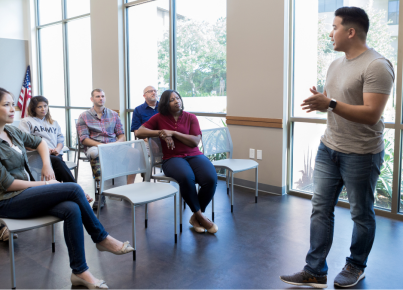Veterans’ rehabilitation is one of the most important procedures that organizations devoted to supporting those who have once protected their country provide. New technological approaches have significantly facilitated the delivery of required rehab services, helping mishandled and mutilated soldiers to be restored quickly and promptly. This paper examines the use of sophisticated technology in the area of rehabilitation for VA and the contextual methods to apply when working with those who have served in the military.
Advanced Prosthetics: Restoring Mobility and Independence
In the realm of Veteran rehabilitation, one of the major technological breakthroughs has been the creation of advanced prosthetics. In recent years, prosthetic technology has progressed at a fast pace, with the most modern devices granting levels of movement and functionality never before seen. Such prosthetics are often outfitted with sensors and microprocessors that imitate human limbs’ natural movement patterns. For example, the LUKE arm, a robot-arm prosthetic funded by the Defense Advanced Research Projects Agency, permits movements that had previously been unachievable, including the capacity to grip a cup or tie shoelaces.
What is more, integrating machine learning algorithms is able to adjust to users’ movements creating an individualized approach that gets better with time. Hence, these incredible advancements are designed to empower veterans to regain a great deal of their independence after losing their limbs, allowing them to perform tasks and conduct activities they never thought possible before.
Virtual Reality Therapy: A New Frontier in Mental Health Rehabilitation
Advanced technology has also become a field in which significant advances have been made in the treatment of mental health disorders, such as PTSD. Virtual reality therapy is a promising approach that puts the patient into a controlled, virtual environment and allows them to experience their trauma in a controlled and monitored manner. Exposure therapy resulted in a substantial decrease in PTSD symptoms among veterans.
The possibility of having control over the environment to which the therapy session is attributed creates opportunities for the therapist to customize the experience for virtually every veteran. The simulations greatly boost veterans’ exposure to the stimuli community of their trauma. This is especially beneficial to mental health since it forms the foundation of dystopian behavior among those diagnosed with PTSD for Veteran Rehabilitation. It is also used for physical therapy, which is credited with creating simulated themes where veterans can practice and recover their physical abilities.
AI-Driven Tools: Personalized and Accessible Mental Health Support
Although a chatbot will never be a substitute for a doctor, this tool can provide fundamental 24-hour mental health support. The U.S. Department of Veterans even integrates such software to assist soldiers and veterans with depression. The integrated chatbot applies natural language processing to rephrase the generated abandoner’s queries and instructions to the user with links to the necessary resources.
Finally, AI-driven mental health tools can be instrumental in spotting people at increased risk and intervening promptly for Veteran Rehabilitation. Analyzing behavior patterns and speech, this technology can warn healthcare professionals of warning signs, allowing veterans to obtain help before the crisis occurs. Moreover, this type of treatment is convenient and more accessible for people who would otherwise be unable to access therapy due to physical, mental, or geographical limitations.
The integration of cutting-edge technology in veteran health programs is reshaping the industry like never before. Whether using high-tech prosthetics to restore lost limbs or VR-based therapy for an entirely fresh way to tackle PTSD, cutting-edge technology is expanding the boundaries of what is conceivable in Veteran health care. And with ongoing development, these breakthroughs are only expected to continue to produce novel technologies that can address these issues more comprehensively and creatively. When provided to organizations such as World Veterans, these technologies are life-altering. They are reshaping the world so that the men and women who once served and protected their countries can reach for a thou.
Follow our blogs.
References
VA Research on Prosthetics.
https://www.research.va.gov/topics/prosthetics.cfm







You must be logged in to post a comment.